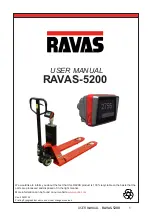
Maintenance Instructions
Tire Replacement
NOTE: Retread tires are not recommended for use on
steering axles of trucks.
•
Front (Steering) Axle - Tires must be removed when
tread is worn to 4/32 inch (3 mm) or less. Retread or
rotate worn tires to drive position.
•
Rear Axles - Tires must be removed when tread is worn
to 2/32 inch (2 mm).
If rib tire is used on front axle and lug- or off-road-type on
rear axle positions:
•
Front (Steering) Axle - Replace tires at front wheels
when tread is worn to 4/32 inch (3 mm) or less.
•
Rear Axles - Tires must be removed when the tread
is worn to 2/32 inch (2 mm) or less. Tires identified
with the word regroovable molded on the sidewall can
be regrooved. A minimum of 3/32 inch (2.38 mm) of
undertread must be left at the bottom of the grooves.
Wheel and Tire Balancing
Out-of-round or out-of-balance wheels or tires can cause vehicle
vibration and bounce, and shimmy.
Replace damaged or
out-of-round wheels. Out-of-round tires and wheel assemblies
can be corrected by rechecking the tire relative to the wheel.
The tire and wheel assembly should thereafter be dynamically
balanced and reinspected while spinning for an out-of-round
condition.
Wear
Radial tires can exhibit three types of normal wear patterns,
even, erosion, or chamfer.
Even Wear
is a sign that the tire is being properly used and
maintained.
Erosion Wear
has also been called rolling wear, channel, or
river wear. Erosion wear is found more often at free rolling tires.
This is an indication that the tire is being used in a slow wearing
operation. What happens is that the belt plies are held very rigid
and the tread is not allowed to distort as it passes through the
contact area. Wear will only occur at the edge of the tread. No
corrective action is required. If erosion gets to be 1/16 inch (2
mm) or more, the tire may be rotated to a drive axle.
Chamfer or Shoulder Wear
, with tires inflated properly, is a
normal tendency of most radial tire designs. If both inside and
outside shoulders are wearing evenly around the tire, no further
action is required. Overinflation is not effective in correcting this
effect.
Irregular Wear
If irregular wear is present, check the axle alignment, tire
pressure, wheel balance, shock and suspension component
condition, and wheel bearing end play.
This condition not only shortens tire life, but will adversely affect
the handling of your vehicle.
Rotating tires from one wheel position to another is a way often
used to even out many types of irregular wear or to avoid it
240
Summary of Contents for ProStar+
Page 4: ......
Page 24: ...Foreword 12...
Page 38: ...Model Description 26...
Page 74: ...Controls Features Declination Zone Map 62...
Page 98: ...Controls Features Center Dash Panel Wing Panel 86...
Page 118: ...Controls Features 106...
Page 243: ...Maintenance Instructions 231...
Page 286: ...Maintenance Intervals and Specifications 274...
































